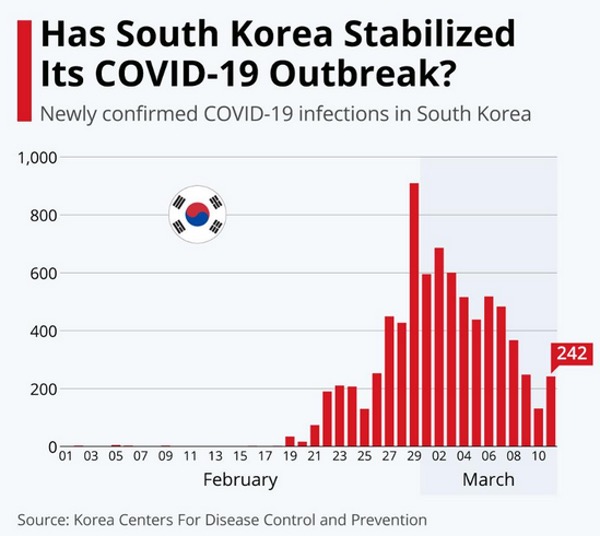We held our fourth “Coffeehouse Night” event at Pagosa Peak Open School last night, March 12… enjoyed by a small (but attentive) audience. A half-dozen local musicians and poets performed; volunteers provided hot soup, coffee and baked goods. The money raised will be used by the intentionally-small school for educational purposes.
We had disinfectant hand wipes available.
But this might have been our last coffeehouse type event for a while. We had scheduled the next coffeehouse for April 16, and yet another on May 14, but it’s not clear if K-12 schools will be allowed to continue serving children through the spring of 2020.
We may be victims of COVID-19, even if we never get sick.
Yesterday, state governments started ordering schools to close. Ohio’s governor ordered all of that state’s public and private schools to close for at least three weeks. Maryland’s governor ordered a two-week closure, New Mexico announced a three-week closure. Michigan ordered schools closed till April 5.
In Washington state — where COVID-19 is blamed for 31 deaths so far — Governor Jay Inslee canceled school in three heavily populated counties — King, Snohomish and Pierce counties — until at least April 27. Maybe longer?
Kentucky’s governor stopped short of a mandatory order but recommended that all public and private schools cease in-person classes. “It is a big but necessary step,” Governor Andy Beshear told reporters…
Rather than close all schools here in Colorado, Governor Jared Polis announced policies to be followed by each individual K-12 school district.
- One COVID-19 case at a school would trigger a closure for at least 72 hours to disinfect the building.
- For schools with three cases within a 30-day period, closure is required for a minimum of 14 days.
- If three schools in a district have cases within a 30-day period, all schools in the district are required to close for a minimum of 14 days.
The state is also suggesting limited visitation to senior facilities, announcing incoming rules regarding nursing homes and senior-care facilities.

The obvious bottleneck to these Colorado policies will be diagnosis and testing.And it appears to be a very serious bottleneck.
How would a school-age child find out that they carry the virus? It’s been pretty well documented that COVID-19 hits older people much harder than young people — and that children often experience no symptoms at all. Maybe a slight cough, or mild fever? A brief headache? Some young people in other countries have reported that COVID-19 symptoms felt milder than an ordinary cold.
According to the report posted on the Colorado Department of Public Health and Environment website, Colorado has managed to test 430 people for COVID-19. 49 have been diagnosed as “presumptive positive” — and all 49 recently traveled outside of Colorado. Or so we are being told.
I’m not clear how anyone determined that those particular 430 people needed to be tested. But it appears that 0.008 percent of Colorado’s population has been tested so far.
We might compare this to, say, the South Korean experience…
When the COVID-19 spread beyond China’s borders in mid-January, it showed up first in South Korea, Italy and Iran, and those three countries experienced contrasting results as they attempted to contain the virus.
Italy, a country of 60 million people, is under complete lock-down until at least early April. Iran appears to have confirmed more than 10,000 cases, with 429 COVID-19 deaths as of yesterday. government officials infected, but has been much more relaxed about required quarantines.
South Korea experienced one of the most serious COVID-19 outbreaks outside China with just over 7,700 confirmed cases reported by March 11.
According to the latest Korea Centers For Disease Control and Prevention data, however, the number of new daily infections across the country has declined in recent days. On the last day of February, there were 909 new cases reported; on March 10, the number had fallen to 131 new cases.
Here’s a chart published by Forbes magazine:

The decline has been credited to effective testing.
As the outbreak became evident in Korea, the national government moved swiftly to ensure free and widespread public testing for COVID-19, and so far, more than 200,000 tests have been carried out. The city of Goyang established an innovative drive-through testing area, a move that’s been copied by some regional officials in Germany — and now, by officials in Colorado, with the first drive-through testing facility now operating on Lowry Boulevard in Denver.
South Korea has a population of about 51 million, almost 10 times the population of Colorado.
Colorado has reportedly tested 0.008 percent of its population.
Reports indicate that 200,000 South Koreans have been tested for COVID-19. That’s 0.4 percent of the national population.
The testing rate in South Korea is 500 times higher than the testing rate in Colorado. Embarrassing.
Is this the best we can do, in one of the world’s wealthiest nations?
The scarcity of testing in Massachusetts mirrors what is happening throughout the country, as officials nationwide say they do not have enough testing capability. Vice President Mike Pence has acknowledged a shortage, despite conflicting statements from President Trump and his top health officials. Even as testing capability has begun to expand from just the US Centers for Disease Control and Prevention into state and private labs, the CDC continues to maintain strict guidelines around who is eligible to be tested.
The problem is particularly acute in Massachusetts, which had 108 documented cases of COVID-19 as of mid-afternoon Thursday, the fourth-most in the US after Washington, New York, and California. That is up from 95 Thursday morning.
“The 95 cases we have – that’s where Italy was at two weeks ago,” said Sam Scarpino, an assistant professor of network science who heads the epidemics lab at Northeastern University. “They have 12,000 cases as of this morning, and their hospitals are overrun.”
